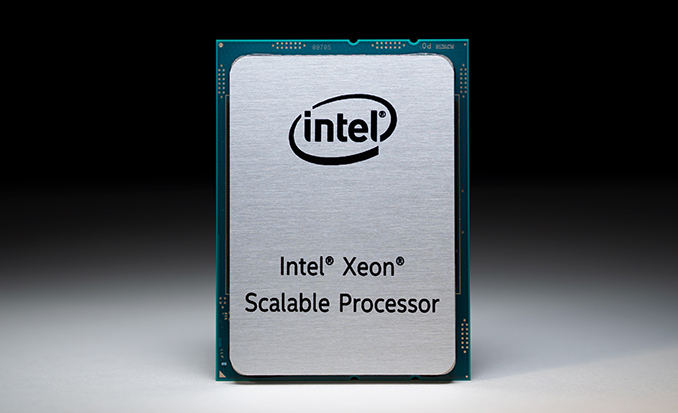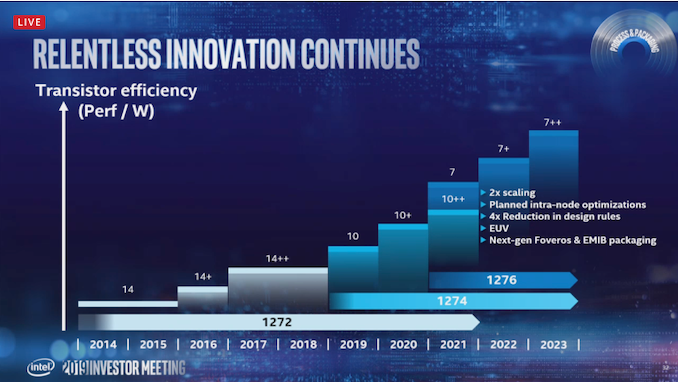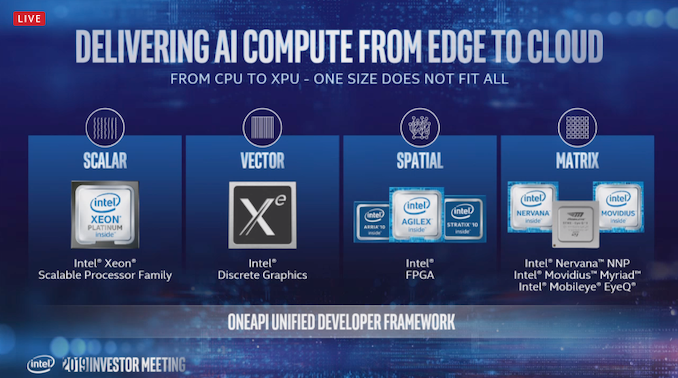Intel Xeon Update: Ice Lake and Cooper Lake Sampling, Faster Future Updates
by Anton Shilov on May 9, 2019 11:00 AM EST
Emerging workloads will require considerably higher performance, and in order to solve upcoming challenges Intel has adjusted its product roadmaps quite significantly. One of the key things that Intel confirmed during its Investor Meeting event this week is shortening its Xeon introduction cadence from 18-24 months down to 12-15 months, thus accelerating its server CPU roadmap.
In the coming months Intel will launch two Xeon processors that will belong to the same platform: Cooper Lake CPUs made using Intel’s 14 nm manufacturing technology, and Ice Lake chips produced using Intel’s 10 nm node. Cooper Lake will offer high core counts and will exclusively support AVX512_BF16 (bfloat16) instructions that will benefit machine learning and near-sensor computing applications, whereas Ice Lake is set to become Intel’s first Xeon made using 10 nm process technology and based on a new microarchitecture offering higher per-core performance. At present, Intel is already sampling Cooper Lake and Ice Lake processors with customers, and claims that it is on track to ship these CPUs in volumes in the first half of next year.
Intel will launch its Ice Lake Xeon processors around four quarters after its Cascade Lake Xeon processors, a shorter than usual timeframe between Xeon releases. According to the chip giant, this will become its new introduction cadence and going forward it will release new generations of Xeon platforms every four to five quarters, down from five to seven quarters today.
Following the Ice Lake Xeon in 2020, Intel plans to release 'Sapphire Rapids' processors for servers in 2021. These chips will likely be made using Intel’s 10++ nm process technology and will rely on a new microarchitecture along with various enhancements to optimize performance in various workloads. We expect the platform to support new connectivity standards given the introduction timeframe. Meanwhile, it is too early to discuss CPU core count, platform capabilities, and other peculiarities. Following the Sapphire Rapids will come Intel’s ‘Next-Gen’ server CPU in 2022 that may be made using a variation of Intel’s 7 nm process technology, depending on how production goes.
Intel’s Xeon processors will continue to be the company’s key components for datacenters, but there will be a host of other products for other datacenter workloads, including Xe GPUs, a variety of FPGAs and others. Having acquired or developed loads of different IP in the recent years, Intel pins a lot of hopes on its diversified product portfolio that will complement next-gen Xeons.
Related Reading:
- Intel Architecture Manual Updates: bfloat16 for Cooper Lake Xeon Scalable Only?
- Intel Server Roadmap: 14nm Cooper Lake in 2019, 10nm Ice Lake in 2020
- An Interview with Lisa Spelman, VP of Intel’s DCG: Discussing Cooper Lake and Smeltdown
- Intel Documents Point to AVX-512 Support for Cannon Lake Consumer CPUs
- Cisco Documents Shed Light on Cascade Lake, Cooper Lake, and Ice Lake for Servers
- Intel’s Xeon Scalable Roadmap Leaks: Cooper Lake-SP, Ice Lake-SP Due in 2020
Source: Intel













29 Comments
View All Comments
PeachNCream - Thursday, May 9, 2019 - link
I fully and completely endorse this comment.voicequal - Thursday, May 9, 2019 - link
Let's each do our part to keep the Anandtech community respectful. There's plenty of room to voice disagreement on a technical basis without stooping to personal attacks.Korguz - Thursday, May 9, 2019 - link
i agree with sa666666 as well...voicequal, hstewart doest voice disagreement on a technical basis, he voices his opinion on twisting the info around to suit his pro intel bias, or.. just makes stuff up that there is no proof of..
Irata - Friday, May 10, 2019 - link
I second that, although WCCFTech forums are beyond toxic and very far into the "they started having free wifi at the asylum" territory.mode_13h - Friday, May 10, 2019 - link
I wouldn't say HStewart is unwelcome, but I wish he would tone down his partisanship.CaedenV - Thursday, May 9, 2019 - link
I knew we have been on 14nm for a while now... but it didn't hit me as to just how long we have been on it until I saw this chart! 6 years?!?! what has Intel been doing?And then they act as if we are going to see 10nm in 2019 at any scale! ha! Forget about 7nm and beyond.
mode_13h - Friday, May 10, 2019 - link
Based on their schedule slippage first on 14 nm (remember how they basically skipped Broadwell on the desktop) and then on 10 nm, they're certainly running low on credibility.Maybe Peach & HStewart can vote down the next dividend payment, so Intel has some more money to invest in its fabs. I'm not sure its investors are entirely blameless in its current woes.
PeachNCream - Friday, May 10, 2019 - link
Nope! I want my dividend and everything else is their problem. :DIn all seriousness, Intel has been operating under pressure from shareholders for a very long time and has enjoyed lots of past growth. There are good times and bad ones in any company that operates in a competitive landscape. Even though the next few years don't look as good as the last few years, I think there's enough other business beyond CPUs to keep the ship on an even keel.
Elstar - Tuesday, May 14, 2019 - link
I wonder when the public will learn more about "Knights Crest" product.